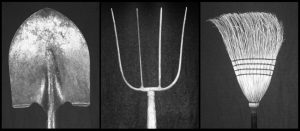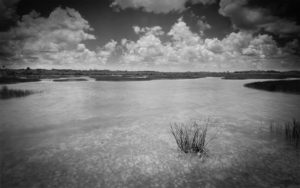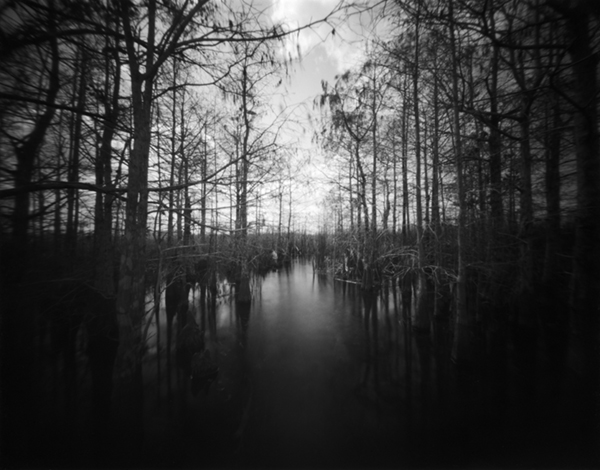What is a project exactly?
Very few will frown their eyebrows if we bring up the word “project”. We all just about know what is meant, don’t we? However, do we really know? “I am doing a project” sounds nice, but what exactly does that mean?
Just out of curiosity and for the purpose of this article, I looked it up on the mighty World Wide Web, and according to this almost all-encompassing and all-knowing web, a “project” has many definitions, such as:
- A project is a set of tasks that must be completed within a defined timeline to accomplish a specific set of goals
- A project is a type of assignment, typically involving research or design, that is carefully planned to achieve a specific objective
- a study of a particular subject done over a period of time, especially by students
These are just a few of the definitions I found, and none of these, or any of the other ones I found, worked in my opinion. It turned out that many definitions were tailored to a particular group or occupation. If the site I found the definition on was geared towards students, so was the definition. The same with construction or scientific projects.
General dictionaries gave general definitions like the ones I quoted here. The problem was they were all either incomplete or half right for our purpose. So even though it is clear there are different types of projects, such as events, housing, scientific research, etc., they all do have two things in common: there is planning involved, and they have a theme.
For this article, we limit ourselves to art projects. More specifically, projects as in:
A repeatable structured activity to produce a series of specific creative deliverables.
I came up with that one, and I am pretty sure there is something wrong with that one too, but it is the best I can do.
The keywords are “specific creative deliverables.” The deliverables (the end product) have something specific in common, a theme if you like. This could be the subject, e.g., park benches. Let’s assume, for the sake of this article, you decided to photograph all park benches within your city limits. That is a project. If it turns out there are just too many park benches like that, you could break it down into a specific color, like red, or a design, such as contemporary, for instance. You can combine some of these specifics and photograph all the contemporary red park benches.
Projects do not necessarily need to have a predetermined end date. You can set one if you like, but projects can also be ongoing until you have enough of it or when your circumstances change.
Are projects and series the same thing?
All projects are series (sometimes containing more than one), but not all series are a project.
For most of us who are reading this, series are a group of images that have something in common or serve a specific purpose. Series can be anything and don’t necessarily have a theme or similar subjects as in a project. For instance, you can choose your ten best works for a gallery show. These ten images do not need to be of the same theme, subject, or something else specific. All 10 can be very different from one another, and their only common denominator that makes them a series is that they are your 10 best works. Projects, on the other hand, are much more specific. Projects do have a theme, subject, or any specific thing you pick.
You can also create subseries within a project. Let’s go back to our park benches project. As we determined, this project contains every red and contemporary park bench without further distinction; that is the main series. Now, if you separate the wooden ones from the metal ones, you have two subseries within the confines of the project.
It all sounds pretty silly, even semantics perhaps, but to execute a project successfully and without too many hiccups, it is good to know what is what. It makes planning the project a lot easier. More about that later.

From a series I call “Unsung Heroes” as an homage to agriculture
https://fineartamerica.com/featured/tools-of-the-trade-bw-rudy-umans.html
Purpose and Subject
The first thing you will need to figure out is what and why. What is the purpose? What am I trying to accomplish?
I put the purpose first for a reason. When thinking about starting a project, I think that’s where it begins. What is my purpose? Part of answering that question is self-exploration. What am I interested in? Why do I want to start a project? Are you curious about something? Do you have a special interest like cars, trains, typewriters, or sewing machines? Do you recognize you lack certain skills, such as night photography or watercolor painting?
Are you on the verge of being burned out, and are you looking for something to inject new life into your artistic endeavors?
One important factor to consider is that the purpose of your project is that you might want to tell a story. Projects don’t always have to be about tangible objects or about expanding your skills. A project could be about family unity or some cultural aspect of the society. It could be about the start-to-finish completion of that brand-new custom house you just bought or some special interest social issue for a book project or for a series of articles for a magazine or your website. Something intangible that caught your eye, and you would like the world to know about. These are very legitimate purposes for a project. In fact, photojournalists and street photographers frequently do just that.
Pondering about the purpose of your project is critical before you start a project. The clearer the answers to the questions you ask yourself, the more successful your project probably will be. As a side benefit, by trying to find answers to the questions, you might learn something about yourself.
It will also be easier to find a suitable subject, and in the end, your accomplishments will be longer lasting. Whatever the outcome might be, you will learn something.
Having said all this, of course you can just go out and take pictures of all the pink front doors you can find, just for the heck of it….
Planning a project.
Now you know a purpose and the subject; it is time to fine-tune your thoughts.
The first step in planning is to break down the “what, where, and when” into bite-size pieces and write them down. You must write them down. In my experience, it is difficult to put a finger on, but something happens if you write these things down; it is almost like they become real, tangible things. They also become more like a commitment now it’s written down. Wasn’t it an Egyptian pharaoh who said, “Let it be written, let it be done”?
The other advantage of writing these things down is that it forces you to really think about it. Writing things down clears your mind and clears your vision. Your brain and your ideas can be all over the map, but pen and paper don’t work that way. They are much more to the point.
In a previous life, I wrote business plans for start-up and emerging businesses. These business plans were a great way for my clients to get their ducks in a row. All those big and idealistic ideas they all had suddenly became perfectly clear and prepared them for the next step.
Writing things down for a project works the same way. A written business plan or a written project plan is like a recipe for cooking your favorite soup. You have all these wonderful ingredients lying on the countertop, but that’s all they are—unconnected ingredients. Once you have the recipe, you can finally cook that delicious soup.
If we stick to those park benches I mentioned earlier, you can start thinking about where to find those benches. Are there enough to photograph to make it worthwhile? The same with the more intangible subject. For instance, you are considering photographing the elderly having dinner in a retirement community or some other senior living facility. That is a great subject, but how about access? Permission of the management? Permission of your subjects? Do I need model releases? Property releases?
Furthermore, pay attention to potential trespassing. In some cases, trespassing is a federal offense in the U.S. and can get you into a heap of trouble.
Permissions and model and property releases are something to consider for anything you do not own and have in mind for your project. When in doubt, ask! Asking beforehand can keep you out of potential trouble. Remember that prevention is better than correction! This is especially important if you have the intention to sell your work!
A planning sheet, or your recipe, could look something like this (just an incomplete sample that might not be applicable to your particular project).
- What: Elderly in good health, age 65 years and older, male and female, having dinner
- Where: In homes for the elderly, nursing homes, senior housing associations, and assisted living facilities. (NOT: Hospice.)
- When: Monday through Friday 3:00PM – 6.00PM
- Time frame: Begin date: August 1, 2025, End date: December 31, 2026 (optional)
- Equipment: DSLR, 50 and 75 mm lenses, flash, tripod, polaroid camera. (for ad hoc giveaway pictures)
- Needed: contact info of management, addresses, releases, and permissions
- Cost: memory cards, equipment rental, fuel, lunch money, Polaroid film, and donation money or goods for some goodwill and to say thank you.

From my ongoing project to photograph the Florida Everglades with a pinhole camera.
https://fineartamerica.com/featured/everglades-marsh-pinhole-rudy-umans.html
Before we discuss the rest of the good stuff, let’s get some drawbacks out of the way. Projects can have drawbacks, but since you are the one in control, you have the power to do something about them or eliminate them completely.
Drawbacks of Projects
The drawbacks of doing a project are few, and the extent of the potential drawbacks depends largely on yourself and your circumstances.
- Drawback: Expectations are too high
- Remedy: Lower them to a more manageable level suitable for your circumstances.
- Drawback: Prep Time or deadline
- Remedy: Unless it is an assignment forced upon you by something or somebody else, projects don’t need a timeline or deadline. You are in charge.
- As far as prep time goes, yes, it takes time to get your ducks in a row, but it is a necessary “evil,” and all worth it.
- Drawback: increased pressure
- Remedy: Relax more and lower the pressure. There shouldn’t be any negative consequences if the project takes a little longer. Self-assigned projects should be designed to lower the pressure of daily life, not to increase them.
- Drawback: Cost
- Remedy: Choose a project that doesn’t require pressure on your budget or takes away from the quality of your life. Maybe a project that requires less travel or other expenses.
Benefits of a project
The benefits of doing projects are multiple. For example, renew motivation, cure burnouts, more sales, increased exposure, sharpen the mind, technical skill improvements, self-discovery, growing as an artist, overcoming creative blocks, and many more!
Learning a new technical skill is most certainly a great benefit. Projects are a great way to learn and practice new things. Nevertheless, and in my opinion, the greatest benefits are to be found in the least tangible things, such as burnout, a creative block, and self-discovery.
Without learning that new technical skill, for instance, your artistic life moves on regardless. It doesn’t stop you from creating. Perhaps you can’t do everything you want in the way you would like to, but not knowing those new techniques does not prevent you from doing what you have been doing. Most likely, it does not cause a temporary mental hiccup in the right hemisphere of your brain and your temporal and frontal lobes. The clock keeps on ticking, and your creative world keeps on turning.
Mental blocks or burnouts, on the other hand, are entirely different beasts. These do make your creative world stop, and not just that, they make you tired and suck the motivation right out of you. They are not good for anybody, let alone artists whose livelihood depends on not having mental blocks and burnouts. Learning a new skill is relatively easy, but mental blocks and burnouts are much harder to overcome.
So, how can projects help with that? How can projects help you to get your motivation back?
For starters, even before the actual creative part, you have the planning and preparation part, which is a more structured way of creativity. It seems like a perfect intermediate stage between being deprived of all your creative juices and letting all your creative juices flow like they used to. Even if your creative juices are dried up, you can probably still write a grocery list of some sort. Well, planning a project is like writing a grocery list. As I brought up earlier, writing things down clears your mind. In other words, the whole process of getting back on track starts with one word, and that word is the first word of your plan. In my experience, that is often all it takes.
The execution phase
The actual execution of the project is just that—the execution of all that hard work you put into the preparations.
You did all the “what, where, and when” things in the planning phase, and now comes the visual part. Now is the time when you train, or maintain, your eyes and your brains. Now is the time when you can challenge yourself to look at objects and subjects in the various ways. This is the fun part, when you get to stretch your knowledge to the outer limits of your artistic universe. Go where no one has gone before.
In the case of a photography-related project (photography is, after all, what I mainly write about), the word “photography” means loosely “drawing with light,” but nevertheless it is still the “Art of Seeing.” The execution phase of a project is perfect to hone that art aspect that is either still latent or already developed within yourself. They say that photographs are made six inches or so behind the lens. I think this is true, but your eyes are the conduits between the subject and your brain, and let’s not forget the camera and your fingers that control all those buttons modern cameras seem to have. Since projects are focused and somewhat a repetition of something specific, this execution phase is the perfect opportunity to train these three to coordinate with one another.
Regardless of your goals and motivation to do a project in the first place, this is the improvement phase where you have the opportunity to learn the most about your chosen art form, your subject, and yourself. The more diligently you take care of this phase, the sweeter the fruits will be.
Projects are a great opportunity for self-improvement!
Projects can foster discipline and perseverance. They can teach you the benefits of finishing what you started. Fulfilling commitments (even the ones to yourself) will have a lasting influence on your integrity, accountability, and sense of responsibility. As I am certain you already have those qualities, look at projects as the maintenance of those precious qualities that will keep you on your toes.
Committing to a project can also create bonds. However, bonds begin with trust. Especially if your project involves other people or animals, trust is paramount. In fact, trustworthiness is one of the most important qualities a person can possess. Who doesn’t want to be trusted?
If there are no other people or animals involved, you can apply the whole trust aspect to yourself. Trust in other people is of great importance, but so is trust in yourself. Committing to a project and finishing what you started can build the trust in yourself and the trust other people have in you.
Therefore, it might not come as a surprise that committing to a project consequentially can improve your awareness that “striving for excellence,” rather than mediocrity or “good enough,” might not be such a bad thing after all.
Last, but not least, keep in mind that improved self-esteem, improved trust, and all the other goodies mentioned will change how you perceive the world and people around you, and that can only benefit all of us. The projects you started and finished can not only be beneficial to yourself but also indirectly to the people around you.
With this word of pretentious, self-proclaimed wisdom, we came to the end of this little write-up about projects.
I truly hope you enjoyed it and that it might be useful to you in some way.
Rudy Umans
Before I completely go, some disclaimers:
- Images and text that are created by the author of this article enjoy copyright protection as defined by the laws of the United States and the rules of the World Intellectual Property Organization (WIPO). The United States is a member of WIPO.
- Furthermore, the above are strictly my opinions. There is no claim of scientific accuracy.
- This essay was 100% written by me. No artificial intelligence was used. That includes all the typos and grammar mistakes that only humans are allowed to make.
